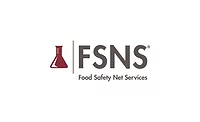FlyPunch! Keeping Fruit Flies at Bay the Natural Way
Recent research conducted by the National Institutes of Health, as well as other studies, concludes that fruit flies are proven vectors of Escherichia coli.[1, 2] In these studies, fruit flies harbored E. coli bacteria for up to 7 days after initial contamination, and were proven to progressively contaminate each piece of produce on which they landed for the duration of that same period.
These startling studies bring an entirely new perspective to the large scale national food recalls we’ve seen in the past decade--particularly as it relates to airborne insects. Flies of all types have been long-established vectors of Salmonella, Staphylococcus and Shigella, in addition to E. coli, so it shouldn’t be much of a surprise to understand fruit flies are very much like their winged brethren.
Interestingly, fruit flies are traditionally seen as a mere aesthetic or customer experience pest, making their presence more a perceived reflection of cleanliness rather than a definitive food safety hazard. And while studies continue in this field, it has become clear that precaution, at a minimum, is more than warranted, if not entirely necessary.
Available options in fruit fly control span the spectrum of sticky traps and do-it-yourself home remedies to toxic chemical solutions and pheromone attractants. Each has been used historically with varying success--or failure as the case may be. But now, demand for a product to consistently and effectively get rid of fruit flies is a priority for any establishment along the vast supply chain of the food industry.
 Our endeavors at Aunt Fannie’s--a natural and nontoxic products company that specifically manufactures cleaning and pest products that are safe to be near food--have focused on these problems for quite some time now. After years of development, Aunt Fannie’s now manufactures the leading product to get rid of fruit flies in both commercial establishments and households. On top of the effectiveness of FlyPunch!, it is also nontoxic, and is specifically engineered to be safe around food and humans. These commercial grade qualities were important in development and are critical to the success in maximizing food safety in all environments. If this product was toxic, successfully killing fruit flies but also simultaneously contaminating our food, then what would be the point?
Our endeavors at Aunt Fannie’s--a natural and nontoxic products company that specifically manufactures cleaning and pest products that are safe to be near food--have focused on these problems for quite some time now. After years of development, Aunt Fannie’s now manufactures the leading product to get rid of fruit flies in both commercial establishments and households. On top of the effectiveness of FlyPunch!, it is also nontoxic, and is specifically engineered to be safe around food and humans. These commercial grade qualities were important in development and are critical to the success in maximizing food safety in all environments. If this product was toxic, successfully killing fruit flies but also simultaneously contaminating our food, then what would be the point?
FlyPunch! is currently used in produce storage, food manufacturers, restaurants, bars, breweries, wineries, hotels, hospitals, universities, bakeries, and the like. Wherever there is food, there will inevitably be fruit flies. And wherever there are fruit flies, food safety is a critical concern. The reason FlyPunch! has seen success--even as a very new technology--is because of how it works.
FlyPunch! is a liquid formulation that attracts, disables, and kills fruit flies. Unlike toxic vapor alternatives, fruit flies do not die off haphazardly on countertops, floors, or potentially in food. Fruit flies are attracted to FlyPunch!, away from where they would typically frequent--produce, sauces, drains, soda fountains, beer taps, liquor bottles, etc.--and focus their attention on the FlyPunch! formulation. The formulation attracts fruit flies inside of our DiveJar dispenser, close enough to make contact with our disabling agent. Our disabling agent begins breaking down their exoskeleton, preventing the fruit fly from removing themselves from the formulation. This is where most home remedies and retail fruit fly products fall short. In those cases, fruit flies are able to walk or fly away after feeding on baits like vinegar or wine. Our disabling agent creates an environment where once the formula is touched, they are physically unable to escape. Lastly, after being disabled, we have an ingredient that will draw the fruit flies down to the bottom of our formulation, where if they have not yet died due to the disabling agent, they will subsequently drown.
Looking for quick answers on food safety topics?
Try Ask FSM, our new smart AI search tool.
Ask FSM →
This three step process of attracting, disabling, and finally killing fruit flies differentiates FlyPunch! from its competitors. Adding the nontoxic attribute to our formulation has made it safe enough to be universally used up and down the entire food supply chain.
 One important and often overlooked challenge with fruit flies is that in most cases, fruit flies will continue to infiltrate any food establishment because they hitchhike in on the produce arriving for use. Similarly, fruit flies are able to lay up to 500 eggs and reproduce quickly, so it is critically important to have an active and ongoing fruit fly program in place. FlyPunch! helps break the reproduction cycle, stifling the population, and reducing the risk of a fruit fly outbreak. By also attracting sexually immature adults just after hatching, FlyPunch! is able to kill these adults prior to being mature enough to reproduce. Killing mature reproducing adults is a good start, but killing sexually immature adults is the crucial step toward truly controlling any fruit fly problem.
One important and often overlooked challenge with fruit flies is that in most cases, fruit flies will continue to infiltrate any food establishment because they hitchhike in on the produce arriving for use. Similarly, fruit flies are able to lay up to 500 eggs and reproduce quickly, so it is critically important to have an active and ongoing fruit fly program in place. FlyPunch! helps break the reproduction cycle, stifling the population, and reducing the risk of a fruit fly outbreak. By also attracting sexually immature adults just after hatching, FlyPunch! is able to kill these adults prior to being mature enough to reproduce. Killing mature reproducing adults is a good start, but killing sexually immature adults is the crucial step toward truly controlling any fruit fly problem.
Establishing a fruit fly program with multiple stations and active replenishment of FlyPunch! formula will not only keep a fruit fly problem at bay, it will reduce the risk of a fruit fly bloom and therefore the vector risks associated with it. Since fruit flies are constantly being brought in on arriving produce, or making their way inside from outdoors, proactive maintenance is not only smart but quite cost effective. In this case, the adage of ‘an ounce of prevention is worth more than a pound of the cure’ rings quite true.
Fruit flies are a pervasive problem everywhere food is present. Given fruit flies are proven vectors of E. coli, the need for a fruit fly program in every food establishment is paramount. The growing liability of food safety is a concern for all, and proactively planning against the contamination and rot in food--particularly as it relates to fruit flies--will only help increase profits and decrease spoil. While many previously existing fruit fly solutions have missed the mark due to toxicity, potential further food contamination, or just plain ineffectiveness, there are new technologies that now exist to satisfy each of the necessary requirements in being near food and efficaciously eradicating the financially-damaging, bacteria-transmitting fruit fly.
Learn more about FlyPunch! at AuntFannie.com.
1. http://www.ncbi.nlm.nih.gov/pmc/articles/PMC1169043/.
2. http://aem.asm.org/content/65/1/1.full.








